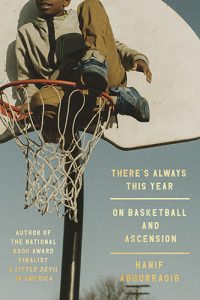Yellow Medicine Review – Spring 2009
Volume 5
Spring 2009
Biannual
Sima Rabinowitz
Guest editor Jimmy Santiago Baca writes that work submitted for the issue “resounded with emotional and spiritual conviction.” With forms, styles, and subject matter befitting a TOC that includes four-dozen writers, these convictions are expressed in nearly 300 pages of poems that include family narratives, lyric explorations of the natural world, and inventive forms that explore the limits of language. The poetry is well accompanied by prose selections, which include excerpts of novels, and brief essays on creativity and the pedagogy of creative writing.
Guest editor Jimmy Santiago Baca writes that work submitted for the issue “resounded with emotional and spiritual conviction.” With forms, styles, and subject matter befitting a TOC that includes four-dozen writers, these convictions are expressed in nearly 300 pages of poems that include family narratives, lyric explorations of the natural world, and inventive forms that explore the limits of language. The poetry is well accompanied by prose selections, which include excerpts of novels, and brief essays on creativity and the pedagogy of creative writing.
Yellow Medicine Review defines itself as a journal of “indigenous literature,” so it seems appropriate here to note the large number of cultural, ethnic, and “social” (for lack of a better term) identities represented by the contributors, as reported in their bios, which include: “Ah Ish Ka’a Full Blood Karuk of northern California,” “gay Puerto Rican,” “Cherokee and European,” “Indio-Mexican,” “Chicano,” “Taos Pueblo and Mexican American,” “Choctaw/Chickasaw/African American,” “Catskill Native of Mohawk/Seneca/Blackfoot lineage,” “Métis with Ojibwa, Scottish, and French-Canadian ancestry,” Samoan, Hawaiian, “southern Cheyenne,” “Cherokee, African American, and Scott-Irish,” “Anishinaabe-Han Métis,” “Cherokee/Irish/Dutch,” “Nimmipuu (Nez Peree),” “Hispanic,” “Anishnaabe from Curve Lake First Nation,” “Haida Indian Nations of the Northwest Coast,” Nicaraguan, among others.
As a white woman, I am reminded by these contributors’ notes of the geographic, ethnic, cultural, historical, sociological, and national diversity of the indigenous populations of North America. As a reader of poetry, I am reminded of poetry’s vast possibilities for captivating attention, generating meaning, preserving images and traditions, questioning the status quo (yes!), and provoking new thinking.
We begin with harsh truths and heartbreak (an excerpt from “Poor White Girls Ain’t Got No Culture,” by Aharen Richardson):
You know the girls
Poor white girls
From poor white mothers
Letting TV tell them who to be
Shooting speed and vodka shots
Who needs culture when you’ve got your freedom?
Instead you can watch the world spin by
From the prison of your mind
Dream of murdering your husband
Before he murders you
Drown your children in the lake
Before they drown you
Then wash in tears of righteousness,
float away in a river of denial
A colorless corpse of an unborn soul;
mankind’s bastard daughter.
And conclude with a connection to the other-worldly (an excerpt from M. J. Rowe’s “Ice and Roses”):
I take a deep breath
And open the outside gate
That encloses this lonely World of Ice
A frozen tear slides down my cheek
As the gate clicks closed
Behind me.
In between these bookends: the whole world. And, finally, not to be missed, the journal’s stunning covers (front and back) – unforgettable and color photographs by RAEchel Running (“Homage to the Spirit of the Buffalo Hunters”) of Rex Bizahaloni (Dinéé-Navajo), her “collaborator, model, assistant, brother, and friend.” The images are dedicated to Rex’s grandfather and they are, like the journal, truly memorable.
[www.yellowmedicinereview.com]




